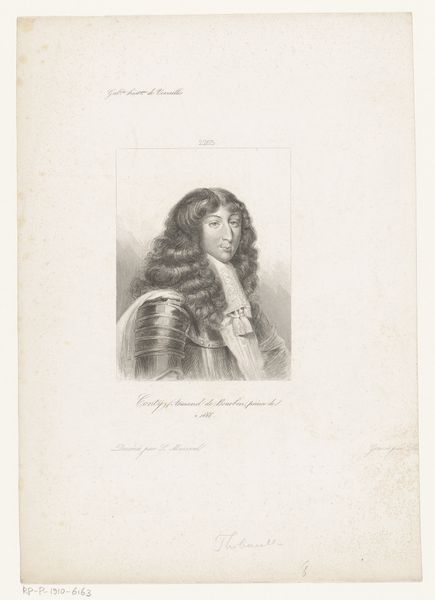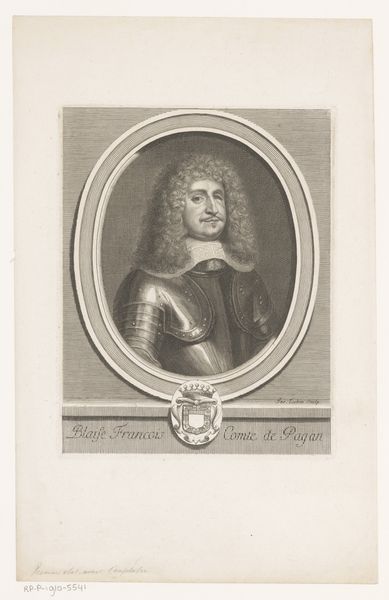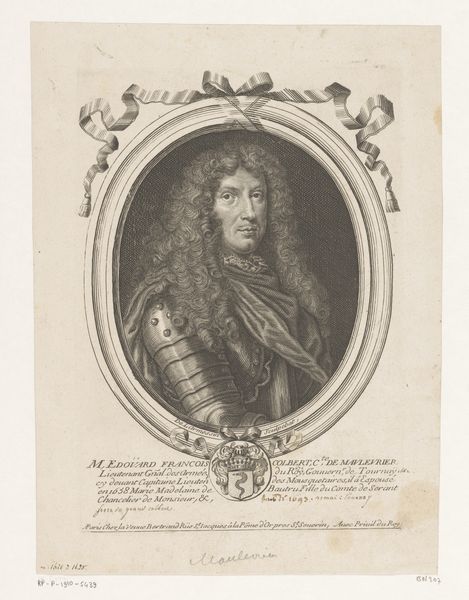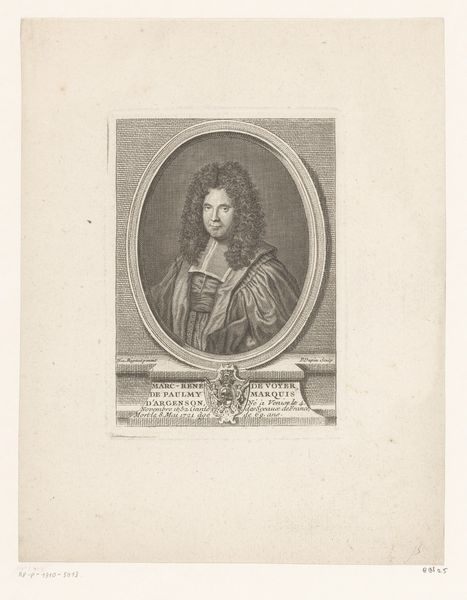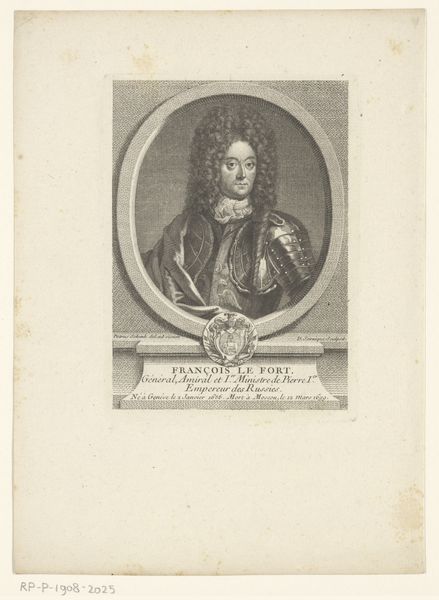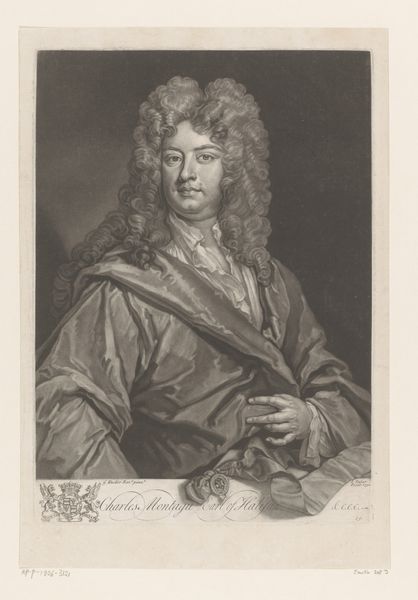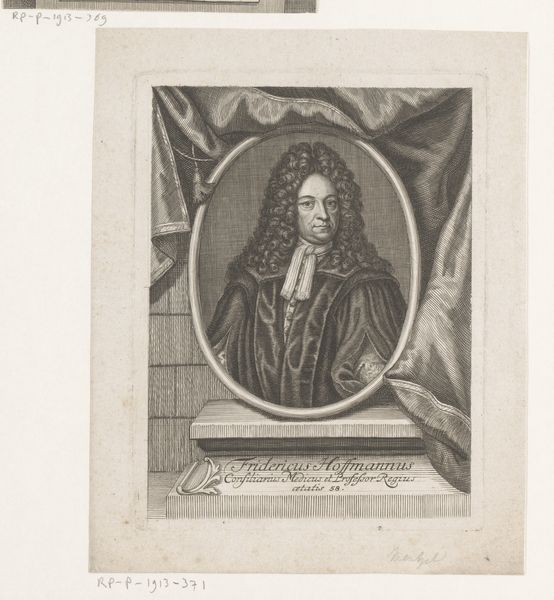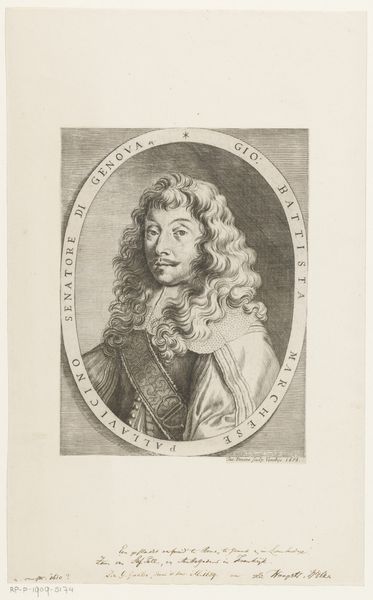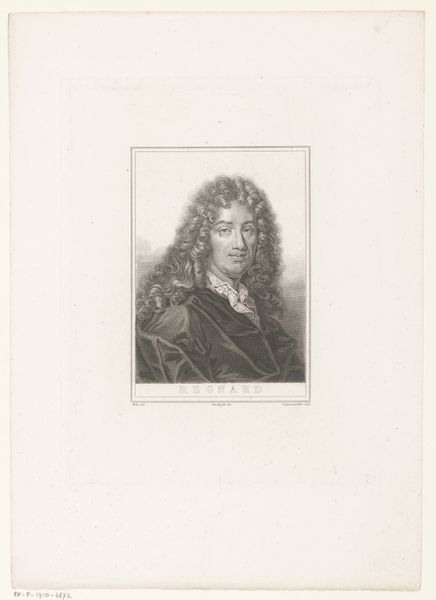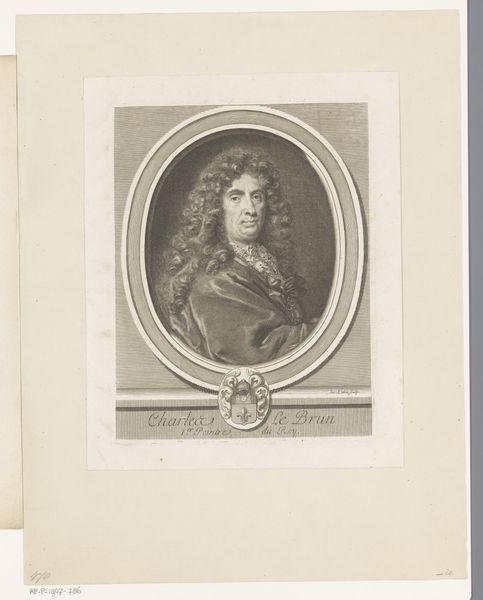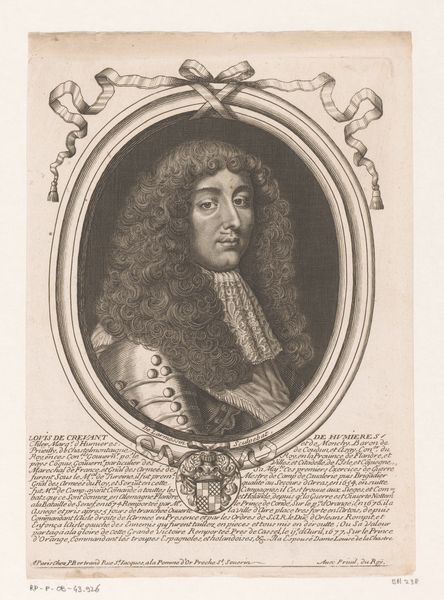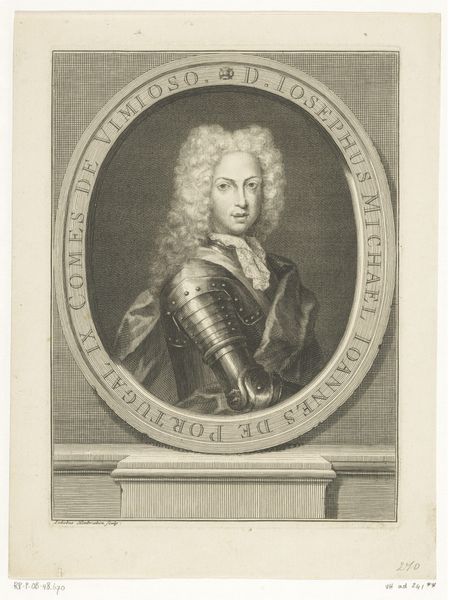
Dimensions: height 195 mm, width 121 mm
Copyright: Rijks Museum: Open Domain
Curator: I’m struck immediately by the detail achieved through engraving in Augustin de Saint-Aubin’s “Portret van Philibert de Gramont.” There's a stillness to it, despite the opulent details of his attire. Editor: Indeed. The material choices – the print itself – speaks volumes. Here we have an engraving made likely some time between 1746 and 1807. How does a mass-produced image, made available through labor-intensive printing processes, shape perceptions of nobility? Curator: It certainly democratizes the image, making it accessible beyond the aristocratic circle, though I would argue that Saint-Aubin focuses specifically on evoking a certain symbolism related to rank and dynasty through Philibert’s armor, cascade of curls and carefully posed expression. Think about the enduring weight carried by the visual symbols of power, circulated across society. Editor: But we must acknowledge the labor embedded within that circulation! The copper plate itself, the ink, the press – consider the material reality and the physical effort required. That act of reproduction, almost as an act of memorializing… Curator: In a way, the print itself becomes a cultural artifact, laden with its own story. It captures not just an individual likeness, but a whole visual language of the aristocracy, available to those who might once have been excluded. Editor: I see it as an early form of media consumption, albeit steeped in class distinction and hierarchical symbolism. An interesting tension lies in this easily disseminated material reproduction representing exclusive power. What does it say about the audience who can now physically possess and circulate an image of this power structure, however symbolically rendered? Curator: Ultimately, it seems Saint-Aubin both immortalizes Philibert de Gramont and the socio-political landscape of his era, providing lasting imagery. It is almost like this medium helps those to relive certain memory linked to social classes. Editor: And when we really scrutinize it, beyond its role in visual communication, it provides a poignant example of the labor involved in disseminating those messages to an audience beyond that specific era. Curator: Absolutely, the convergence of skill, symbolic intent, and wider dissemination invites reflection on cultural significance then and now. Editor: A compelling reminder to examine both the images themselves and the mechanics that brought them to our eyes.
Comments
No comments
Be the first to comment and join the conversation on the ultimate creative platform.
